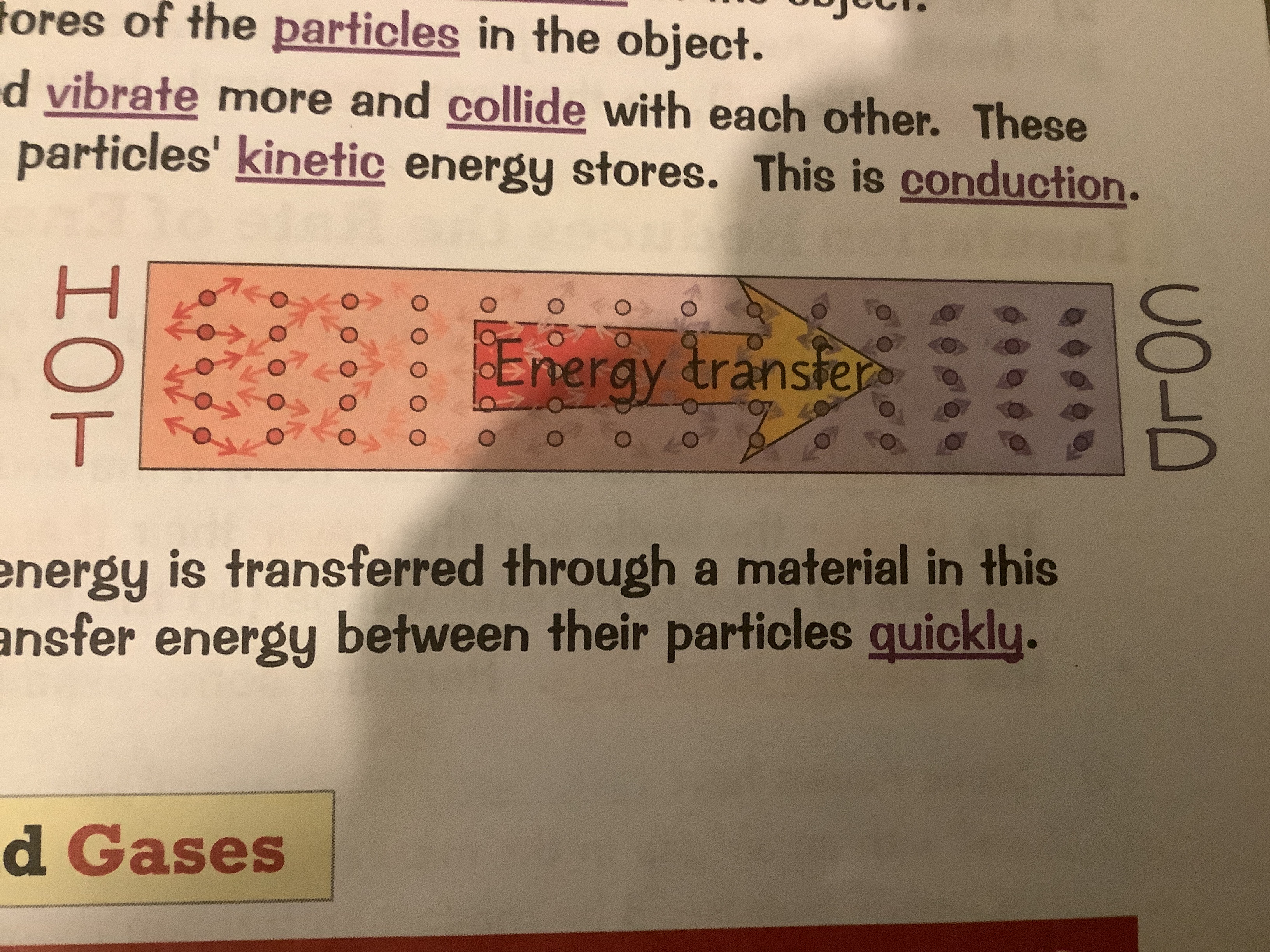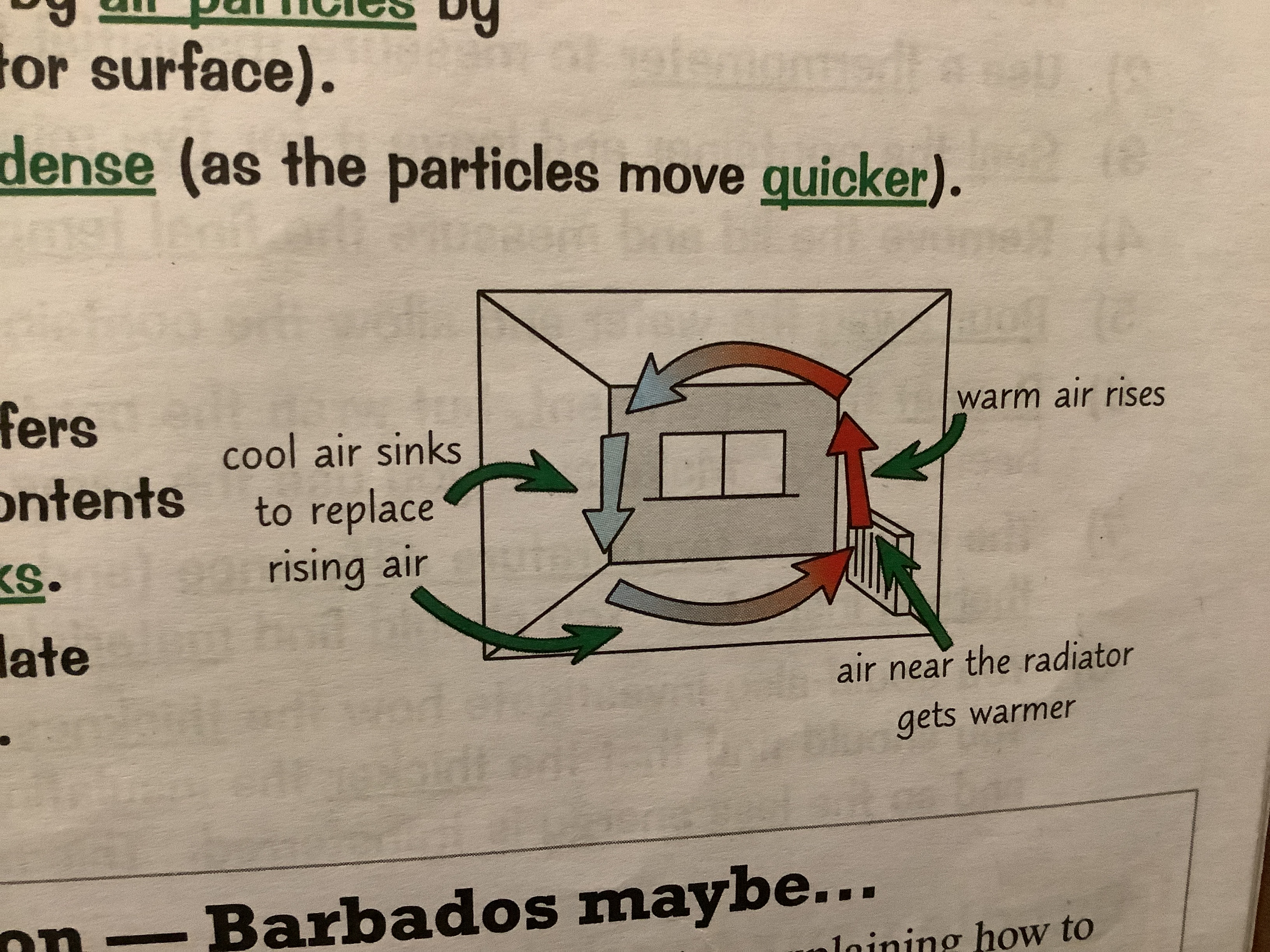4.1.2.1 Energy transfers in a system
0.0(0)
0.0(0)
Card Sorting
1/12
Study Analytics
Name | Mastery | Learn | Test | Matching | Spaced |
|---|
No study sessions yet.
13 Terms
1
New cards
Conservation of energy
Energy can be transferred, store or dissipated but never created or destroyed
2
New cards
Dissipated energy
Wasted energy- energy that is stored in a way that is not useful
3
New cards
Energy transfers in a phone
A mobile phone is a system. When you use the same energy is usefully transferred from the chemical energy store of the battery on the phone for some of this energy is dissipated in the transfer to the thermal energy store of the phone. You may have noticed your faith is warm if you’ve been using it for a while.
4
New cards
Energy transfers within a closed system
A cold spoon is dropped into an insulated flask of hot soup which is then sealed. You can assume that the flask is a perfect thermal insulator, so the spoon and the soup form a closed system. Energy is transferred from the thermal energy store of the seat to the useless thermal energy store of the spoon, causing the soup to cool down. energy transfers has occurred within the system, but no energy has left the system so the net change in energy zero.
5
New cards
What is thermal conductivity
**Thermal conductivity is a measure of how well a material conducts energy when it is heated.**
6
New cards
The higher the thermal conductivity
The quicker the material heats up
The higher the rate of energy transfer by conduction across the material
Materials with high thermal conductivity heat up faster than materials with low thermal conductivity
The higher the rate of energy transfer by conduction across the material
Materials with high thermal conductivity heat up faster than materials with low thermal conductivity
7
New cards
Therefore, good insulators which keep the energy transfer through them as low as possible have
* A **low** thermal conductivity
* Layers that are as **thick** as possible
* Layers that are as **thick** as possible
8
New cards
Lubrication
Reduces frictional forces
Less energy is dissipated to thermal energy stores
Air resistance (streamlining)
Usual oil- for easy flow
Less energy is dissipated to thermal energy stores
Air resistance (streamlining)
Usual oil- for easy flow
9
New cards
Insulation
**Reduces rate of energy transfers has low thermal conductivity so rate of cooling** is low
Thick walls- made from materials with low thermal conductivity - slower the rate of energy transfer
Cavity walls- made up of an inner and outer wall with an air gap in the middle, the air gap reduces the amount of energy transferred by conduction through the walls
Loft insulation- can reduce convection currents being created in lifts
Double- glazed windows- work in the same way as cavity walls- they have an air gap between two sheets of glass to prevent energy transfer by conduction through the windows, lower thermal conductivity
Draught excluders - around doors and windows reduce energy transfers by convection
Thick walls- made from materials with low thermal conductivity - slower the rate of energy transfer
Cavity walls- made up of an inner and outer wall with an air gap in the middle, the air gap reduces the amount of energy transferred by conduction through the walls
Loft insulation- can reduce convection currents being created in lifts
Double- glazed windows- work in the same way as cavity walls- they have an air gap between two sheets of glass to prevent energy transfer by conduction through the windows, lower thermal conductivity
Draught excluders - around doors and windows reduce energy transfers by convection
10
New cards
High thermal conductivity
A lot of energy transfers
11
New cards
Conduction
Occurs mainly in solids
**The process where vibrating particles transfer energy to neighbouring particles**
Energy transferred to an object by heating is transferred to the thermal store of the object. This energy is shared across the kinetic energy stores of the particles in the object.
The particles in the part of the object being heated vibrate, more and collide with each other. These collisions calls energy to be transferred between particles kinetic energy stores .This conduction.
The process continues throughout the object until the energy is transferred to the other side of the object is then usually transferred to the thermal energy store of the surroundings, or anything else touching the object.
Thermal conductivity is a measure of how quickly energy is transferred three material in this way materials with a high thermal conductivity transfer energy between the particles quickly.
**The process where vibrating particles transfer energy to neighbouring particles**
Energy transferred to an object by heating is transferred to the thermal store of the object. This energy is shared across the kinetic energy stores of the particles in the object.
The particles in the part of the object being heated vibrate, more and collide with each other. These collisions calls energy to be transferred between particles kinetic energy stores .This conduction.
The process continues throughout the object until the energy is transferred to the other side of the object is then usually transferred to the thermal energy store of the surroundings, or anything else touching the object.
Thermal conductivity is a measure of how quickly energy is transferred three material in this way materials with a high thermal conductivity transfer energy between the particles quickly.

12
New cards
Convection
Occurs in liquids and gases
**Convection is where energetic particles move away from quarter to cooler regions**
Convection can happen in gases and liquids. Energy is transferred by heating to the third most of the liquid or gas again. This energy a shared across the kinetic store of the gas or liquid particles.
Unlike in solid, the particles in liquid and gases are able to move. When you heat a region of a gas or a liquid particles move faster in the space between individual particles increase, this course, is the density of the region being heated to decrease.
Because liquids and gases can flow, the warmer and less dense region will rise above denser cooler regions. If there is a constant heat, source of convention, current can be created.
**Convection is where energetic particles move away from quarter to cooler regions**
Convection can happen in gases and liquids. Energy is transferred by heating to the third most of the liquid or gas again. This energy a shared across the kinetic store of the gas or liquid particles.
Unlike in solid, the particles in liquid and gases are able to move. When you heat a region of a gas or a liquid particles move faster in the space between individual particles increase, this course, is the density of the region being heated to decrease.
Because liquids and gases can flow, the warmer and less dense region will rise above denser cooler regions. If there is a constant heat, source of convention, current can be created.
13
New cards
Convection current
1. Heating a room with a radiator relies on creating convention currents in the air of the room
2. Energy is transferred from the radiator to the nearby air by conduction (the air particles collide with the radiator surface)
3. The air by the radiator becomes warmer and less dense(as the particles move quicker)
4. This warm air rises, and is replaced by cooler air. The cooler air is then heated by the radiator.
5. At the same time, the previously heated air transfers energy to the surroundings(e.g. the walls and contents of the room). It cools becomes denser and Sinks
6. This cycle repeats causing a flow of air to circulate around the room. This is a convention current.
\
